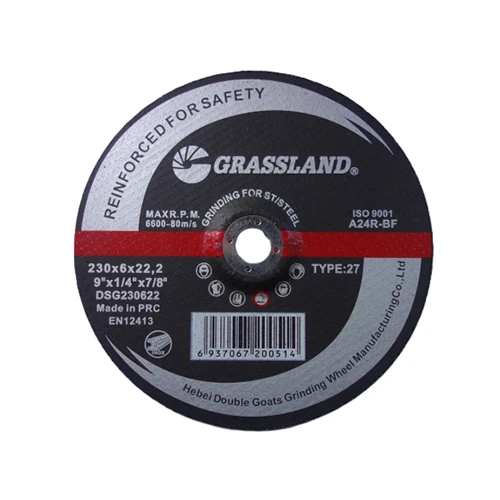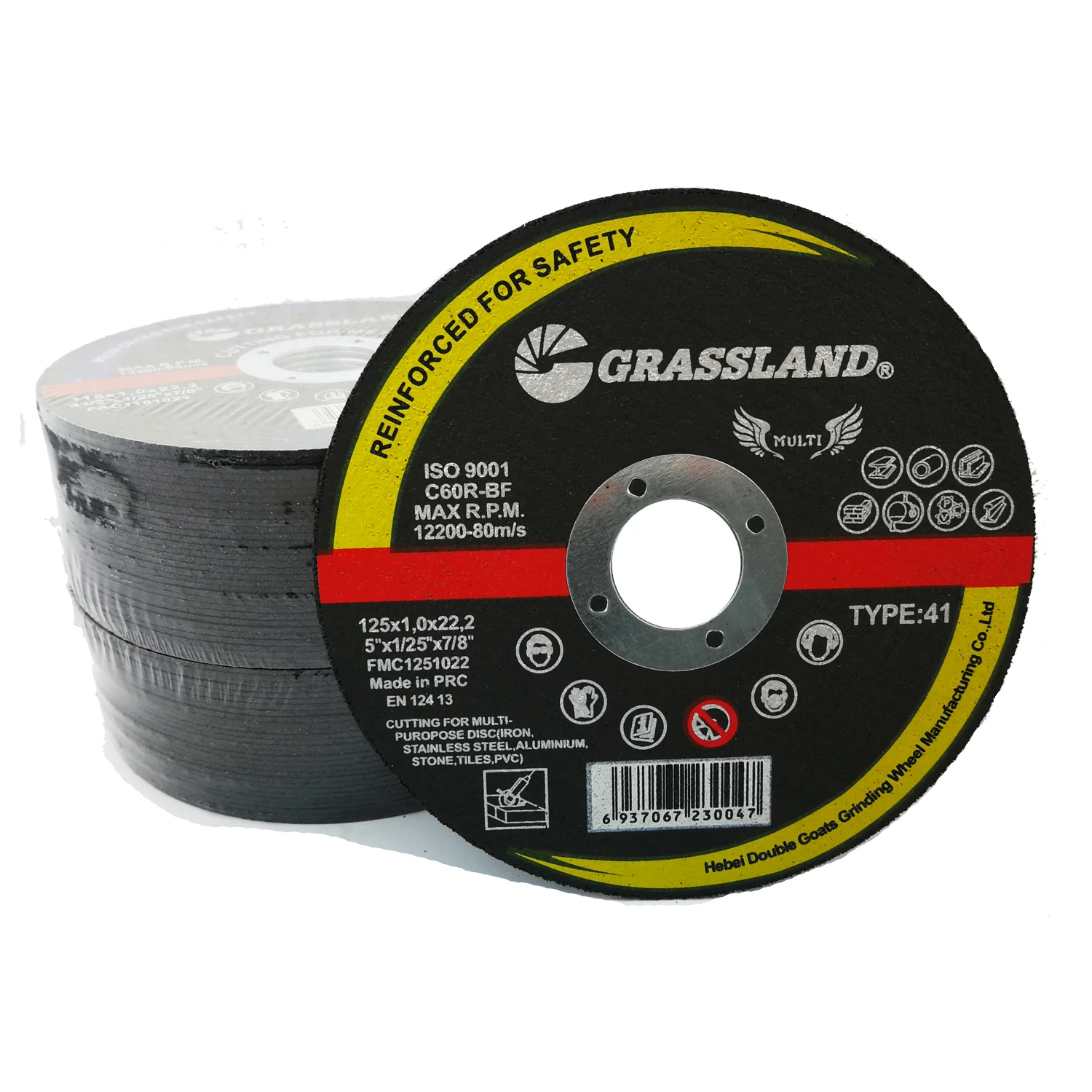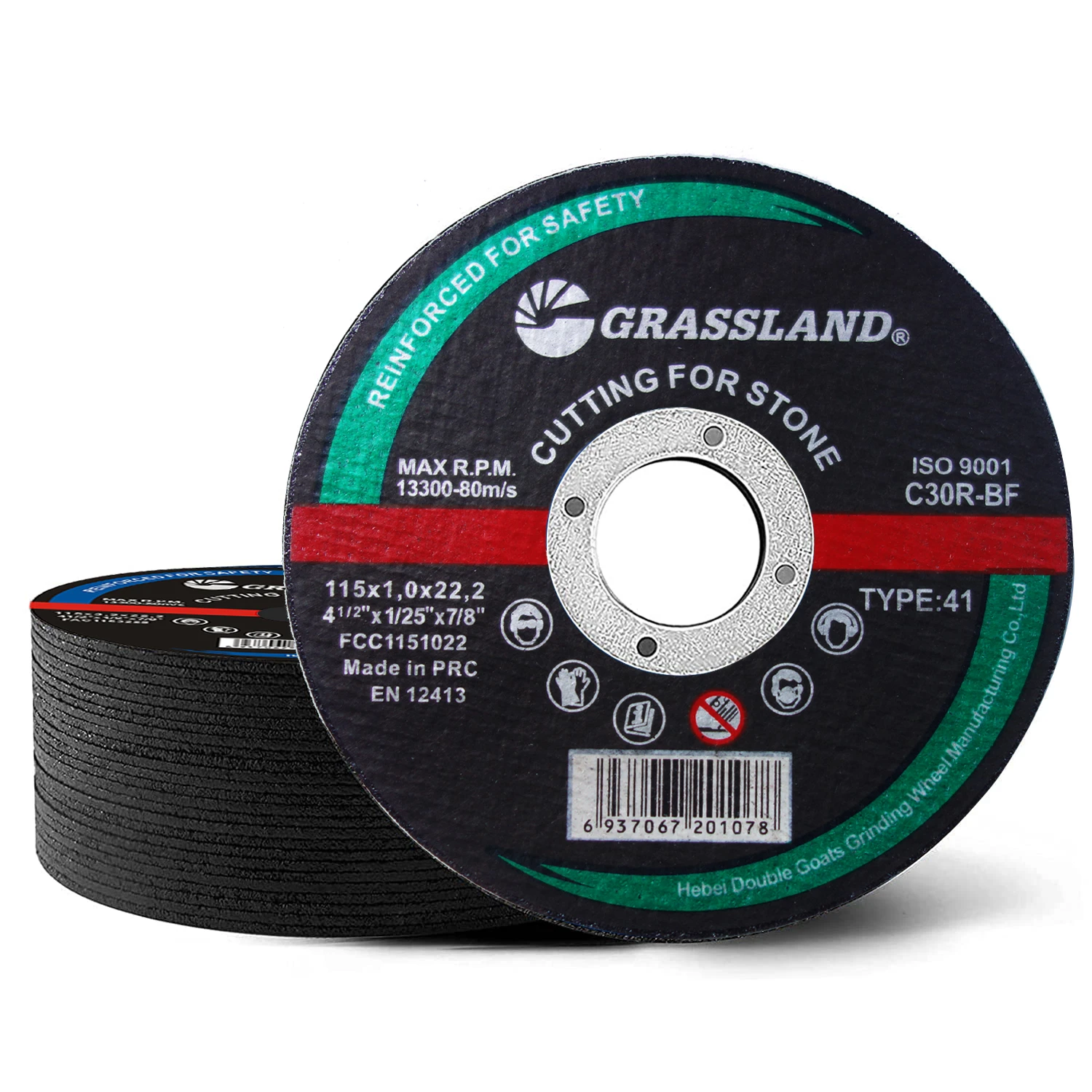The Advanced Engineering of Flexible Grinding Wheels for Industrial Applications
In the demanding landscape of modern industrial manufacturing, the pursuit of precision, efficiency, and surface integrity drives continuous innovation in abrasive technologies. Among these advancements, the flexible grinding wheel stands out as a critical tool, offering unparalleled adaptability and performance across a spectrum of challenging applications. This article delves into the intricate details of these specialized abrasives, highlighting their manufacturing processes, technical advantages, diverse application scenarios, and the stringent quality standards that define their efficacy in B2B environments.
Industry Trends and Market Dynamics in Abrasive Technology
The global market for abrasives is experiencing steady growth, fueled by escalating demands from sectors such as automotive, aerospace, construction, and metal fabrication. Key trends include the increasing adoption of advanced materials (e.g., composites, superalloys) that require specialized grinding solutions, the drive towards automation in manufacturing processes, and a heightened focus on worker safety and environmental sustainability. This environment places a premium on abrasive tools that can deliver superior performance while extending service life and reducing operational costs. Innovations in bond technology, abrasive grain synthesis, and disc construction are central to meeting these evolving needs. The demand for a versatile flexible grinding disc that can adapt to various contours and materials without compromising finish quality is particularly strong, driving research and development efforts across the industry.
The Manufacturing Process of a Flexible Grinding Wheel
The production of a high-performance flexible grinding wheel is a meticulously controlled multi-stage process, ensuring consistency, safety, and optimal abrasive characteristics. Understanding this process provides insight into the inherent quality and performance of these tools.
Key Materials:
- Abrasive Grains: Typically high-quality Aluminum Oxide (for general-purpose grinding of metals) or Silicon Carbide (for non-ferrous metals, stone, and ceramics). Zirconia Alumina offers enhanced toughness and self-sharpening properties for heavy stock removal.
- Resinoid Bond: A thermosetting phenolic resin is commonly used to bind the abrasive grains together and to the reinforcement. This bond's formulation dictates the wheel's hardness, flexibility, and heat resistance.
- Reinforcement: Multiple layers of high-tensile fiberglass mesh are embedded within the disc to provide structural integrity, burst strength, and safety, especially crucial for thin flexible grinding disc designs.
- Fillers and Additives: Various inert materials and chemical additives are incorporated to optimize grinding performance, reduce heat, and control wear rate.
Process Steps:
- Raw Material Preparation & Blending: Abrasive grains, resin, fillers, and additives are precisely measured and thoroughly mixed to achieve a homogeneous blend. This step is crucial for consistent product performance.
- Molding & Pressing: The mixed abrasive material, along with layers of fiberglass reinforcement, is placed into molds. Hydraulic presses apply immense pressure to form the disc into its desired shape and density. This process ensures the proper distribution of abrasive grains and bond.
- Curing (Baking): The pressed discs undergo a controlled thermal curing process in specialized ovens. This step initiates the thermosetting reaction of the resin bond, hardening it and permanently binding the abrasive grains and reinforcement. Precise temperature and time profiles are critical.
- Finishing & Balancing: After curing, the discs are inspected, trimmed, and any burrs removed. Many high-quality discs undergo a balancing procedure to minimize vibration during operation, enhancing user comfort and grinding precision.
- Quality Control & Testing: Each batch undergoes rigorous testing. This includes burst testing (to verify maximum operating speed and safety), hardness testing, dimensional checks, and performance testing on various materials. Adherence to international standards like ISO 9001, EN 12413 (for safety requirements of bonded abrasive products), and ANSI B7.1 is paramount.

Target Industries & Advantages:
These precisely engineered wheels serve critical roles in industries such as:
- Petrochemical: For weld preparation, deburring pipelines, and surface finishing of tanks, where corrosion resistance is crucial.
- Metallurgy & Fabrication: Essential for smoothing welds, removing slag, and shaping metal components, offering energy saving through efficient material removal.
- Water Supply & Drainage: Used in the fabrication and maintenance of pipes and fittings, ensuring smooth joints and surfaces.
- Automotive & Aerospace: For fine finishing, paint preparation, and working with complex geometries of specialized alloys and composite materials.
The advantages are clear: enhanced safety due to superior burst strength, extended service life reducing changeover times, and superior finish quality that often reduces subsequent finishing steps.
Technical Specifications and Performance Parameters
Understanding the technical specifications is paramount for selecting the correct flexible grinding wheel for a given application. These parameters directly influence performance, safety, and cost-efficiency.
Key Parameters:
- Abrasive Type: Aluminum Oxide, Zirconia Alumina, Silicon Carbide, Ceramic Alumina. Each has specific properties for different materials and applications.
- Grit Size: Ranges from coarse (e.g., 24, 36) for aggressive stock removal to fine (e.g., 80, 120) for finishing.
- Bond Type: Resinoid (most common for flexible wheels), Vitrified, Rubber. The resinoid bond provides the necessary flexibility.
- Dimensions: Diameter (e.g., 4", 4.5", 5", 7", 9"), Thickness (e.g., 3mm, 6mm), and Arbor Hole (e.g., 16mm, 22.23mm). Thinner discs offer more flexibility but less aggressive removal.
- Maximum Operating Speed (RPM/m/s): Critically important for safety, ensuring the wheel is used within its design limits.
- Hardness Grade: Refers to the strength of the bond holding the abrasive grains. Softer grades release grains faster, exposing new sharp edges; harder grades retain grains longer.
Product Specification: GRASSLAND 4″ FLEXIBLE GRINDING DISC 100X3X16MM
| Parameter | Specification |
|---|---|
| Product Name | GRASSLAND 4″ FLEXIBLE GRINDING DISC |
| Dimensions (Diameter x Thickness x Arbor) | 100mm x 3mm x 16mm (4" x 1/8" x 5/8") |
| Abrasive Material | Premium Aluminum Oxide |
| Bond Type | Reinforced Resinoid |
| Grit Size Range | Typically P36 to P60 for general purpose; specific grit on request. |
| Maximum Operating Speed | 15,300 RPM / 80 m/s |
| Applicable Materials | Steel, Stainless Steel, Iron, Cast Iron, Structural Steels |
| Reinforcement | Double fiberglass mesh for enhanced safety |
| Standards Compliance | EN 12413, ISO 9001:2015 |
Diverse Application Scenarios and Customer Experience
The versatility of the flexible grinding wheel makes it indispensable across a multitude of industrial operations. From heavy stock removal to precision surface finishing, these discs offer solutions where rigidity is a hindrance.
Typical Applications:
- Weld Blending and Smoothing: Essential for achieving smooth, aesthetically pleasing, and structurally sound welds in fabrication and repair.
- Deburring and Edge Chamfering: Efficient removal of sharp edges and burrs from machined or cut parts, improving safety and preparing surfaces for further processing.
- Surface Conditioning and Preparation: Creating optimal surface profiles for painting, coating, or bonding by removing rust, scale, or old finishes.
- Contour Grinding: Their flexibility allows them to conform to irregular and curved surfaces, a critical advantage in automotive bodywork, aerospace components, and artistic metalwork.
- Light Stock Removal: For applications requiring controlled material removal without excessive gouging or heat buildup.
Customer Feedback & Usage Examples:
"Our fabrication shop switched to GRASSLAND flexible discs for stainless steel weld blending, and the results were immediate. We've seen a 20% reduction in processing time per weld and a noticeably smoother finish, which our clients appreciate. The operators also report less fatigue due to reduced vibration," notes a Production Manager from a leading food-grade equipment manufacturer. Another user from a maritime repair yard comments, "When working on ship hulls, access to tight spots and curved surfaces is always a challenge. The flexibility of these discs allows us to effectively grind and prepare surfaces that were previously difficult or impossible with rigid wheels, significantly improving our repair turnaround times."

Technical Advantages of Flexible Grinding Wheels
The inherent design of a flexible grinding wheel offers distinct advantages over traditional rigid grinding wheels, making them an optimal choice for specific tasks:
- Superior Conformability: The primary advantage is their ability to flex and conform to irregular or curved surfaces, ensuring consistent contact and uniform material removal without gouging. This is a key differentiator from rigid wheels.
- Reduced Heat Generation: The more open structure and inherent flexibility contribute to better heat dissipation during grinding, minimizing heat-induced discoloration, warping, and metallurgical damage to the workpiece.
- Enhanced Surface Finish: Flexible discs are excellent for achieving finer, smoother surface finishes with reduced chatter marks, often eliminating the need for subsequent sanding steps.
- Improved Operator Comfort and Control: The flexibility absorbs more vibration, leading to a smoother grinding experience, reducing operator fatigue, and providing better control over the grinding process. This indirectly contributes to better safety.
- Versatility: A single flexible disc can often perform tasks that would require multiple grades or types of rigid abrasives, simplifying inventory and tool changes.
- Cost-Effectiveness: While the initial flexible grinding wheel price might be slightly higher than standard rigid wheels, their extended service life, reduced rework, and ability to streamline processes often lead to significant overall cost savings.
Vendor Comparison and Customization Solutions
When selecting a supplier for flexible grinding solutions, B2B decision-makers must consider several factors beyond just price. Quality, reliability, and technical support are paramount.
Key Comparison Factors:
| Factor | GRASSLAND Advantage | Generic Competitor Challenge |
|---|---|---|
| Abrasive Quality & Consistency | Utilizes high-grade, precisely sized Aluminum Oxide for consistent performance and extended life. ISO 9001 certified manufacturing ensures batch-to-batch uniformity. | Variable abrasive quality, inconsistent grit distribution leading to uneven wear and unpredictable performance. |
| Bond Technology & Durability | Advanced resinoid bond formulation offers optimal flexibility, heat resistance, and grain retention, preventing premature shedding. | Inferior bond can lead to rapid grain loss, premature disc failure, and increased heat generation. |
| Safety Certifications | Fully compliant with EN 12413 and other relevant international safety standards; rigorously burst-tested. | May lack comprehensive safety certifications, potentially posing risks to operators and non-compliance fines. |
| Technical Support & Expertise | Dedicated technical team offers application guidance, troubleshooting, and support for optimized grinding solutions. | Limited or no technical support, leaving customers to resolve application challenges independently. |
| Customization Capability | Offers tailored solutions for specific materials, dimensions, or performance requirements. | Standard off-the-shelf products only, limiting specialized applications. |
Customized Solutions:
Many industrial operations have unique grinding requirements that standard off-the-shelf products cannot fully address. Leading manufacturers, like GRASSLAND, offer bespoke solutions, allowing clients to optimize their processes. This includes:
- Special Abrasive Blends: Developing specific abrasive grain mixtures for exotic alloys, composites, or non-metallic materials.
- Custom Dimensions: Producing discs with non-standard diameters, thicknesses, or arbor hole sizes to fit unique machinery or application spaces.
- Optimized Bond Formulations: Adjusting bond hardness and flexibility to achieve a specific balance between aggression, finish, and service life for particular applications.
- Prototyping & Testing: Collaborating with clients to develop, test, and refine custom discs under real-world conditions to ensure optimal performance.
Application Case Studies: Demonstrating Real-World Impact
Case Study 1: Automotive Frame Fabrication
A major automotive manufacturer required an efficient solution for blending robotic welds on complex vehicle frame assemblies made of high-strength low-alloy (HSLA) steel. Traditional rigid grinding wheels often caused localized heat distortion and required multiple passes, slowing down production. By implementing GRASSLAND 4" flexible grinding discs with a P60 Zirconia Alumina abrasive, the manufacturer achieved a consistent, smooth finish in a single pass. This resulted in a 15% reduction in cycle time per frame and a significant decrease in heat-affected zone (HAZ) defects, improving both quality and throughput.
Case Study 2: Stainless Steel Tank Finishing for Pharmaceutical Industry
A pharmaceutical equipment fabricator faced challenges in achieving the stringent surface finish requirements (Ra values below 0.8 µm) for internal welds of stainless steel processing tanks. The complex curved surfaces made manual grinding laborious and inconsistent. After consultation, a customized flexible grinding disc with a finer grit Silicon Carbide blend was provided. This solution enabled operators to smoothly blend welds into the tank's contours, consistently meeting the Ra specification. The overall rework rate dropped by 25%, and compliance with industry regulations (e.g., FDA cleanliness standards) was easily maintained.

Elements: Authoritativeness and Trustworthiness
Certifications and Quality Assurance:
GRASSLAND products are manufactured under strict adherence to international quality management systems, notably ISO 9001:2015. Our grinding and cutting wheels comply with EN 12413 safety standards, ensuring that every product meets rigorous safety and performance benchmarks. This commitment to quality and safety is backed by continuous internal testing and independent audits.
Strategic Partnerships & Industry Experience:
With over two decades of dedicated service in the abrasives industry, GRASSLAND has cultivated strategic partnerships with major industrial players across various sectors, including heavy machinery, pipeline construction, and precision metalworking. Our extensive experience has led to deep insights into client needs, fostering product development that addresses real-world industrial challenges.
Frequently Asked Questions (FAQ):
- Q: What is the primary difference between a flexible grinding wheel and a standard rigid grinding wheel?
- A: The key difference lies in their bond structure and reinforcement. Flexible grinding wheels, like the GRASSLAND 4″ flexible grinding disc, are designed with a more elastic resinoid bond and specific fiberglass reinforcement that allows them to flex and conform to contoured surfaces. Rigid wheels, conversely, are designed for aggressive material removal on flat or simple surfaces where rigidity is an advantage.
- Q: Can I use a flexible grinding wheel for cutting applications?
- A: No, flexible grinding wheels are specifically engineered for grinding, blending, and finishing tasks. Using them for cutting is unsafe and can lead to disc breakage and severe injury. Always use a dedicated cut-off wheel for cutting applications.
- Q: How does grit size affect the performance of a flexible grinding disc?
- A: Coarser grit sizes (e.g., P36, P40) are used for more aggressive material removal and initial shaping. Finer grit sizes (e.g., P60, P80, P120) are used for achieving smoother finishes, deburring, and surface preparation where less material removal is desired but a high-quality finish is paramount.
- Q: What are the types of grinding wheels suitable for specific metals?
- A: For general steel and carbon steel, Aluminum Oxide is standard. For stainless steel, hard steels, and exotic alloys, Zirconia Alumina or Ceramic Alumina offer superior performance and longevity. Silicon Carbide is ideal for non-ferrous metals like aluminum, as well as cast iron, stone, and ceramics. The choice of abrasive significantly impacts efficiency and tool life.
Lead Time & Fulfillment:
We maintain robust supply chain management to ensure efficient order processing and delivery. Standard product lead times are typically 5-7 business days for stock items, with expedited shipping options available. For customized solutions, lead times are determined on a project-specific basis, following design and prototyping approval.
Warranty Commitments:
All GRASSLAND products come with a manufacturer's warranty against defects in materials and workmanship, adhering to industry standards and specific product guarantees. Details are available upon request or via our customer support portal.
Customer Support:
Our dedicated technical support team is available via phone, email, and live chat during business hours to assist with product selection, application challenges, and after-sales inquiries. We also offer on-site technical consultation for complex industrial setups to ensure optimal product integration and performance.
Conclusion: The Future of Precision Grinding
The continuous evolution of the flexible grinding wheel underscores its indispensable role in modern industrial abrasive technology. Its unique ability to balance aggressive material removal with superior surface finish, coupled with enhanced safety and operator comfort, positions it as a preferred solution across numerous B2B applications. As industries continue to demand higher precision, efficiency, and adaptability from their tools, innovations in flexible grinding technology will remain at the forefront, driving productivity and quality standards worldwide. Investing in high-quality, certified flexible grinding solutions is not merely a purchase; it is a strategic decision that enhances operational efficiency, product quality, and long-term cost-effectiveness.
References
- International Organization for Standardization. ISO 9001:2015 - Quality management systems - Requirements. Available at: iso.org
- European Committee for Standardization. EN 12413:2019 - Safety requirements for bonded abrasive products. Available at: standards.cen.eu
- The Abrasive Engineering Society. Abrasives Handbook: Selection and Application. Available at: abrasivesociety.org
- Manufacturing Engineering Magazine. Advanced Abrasives for Modern Manufacturing. SME Media. Available at: sme.org/technologies/articles/2021/september/advanced-abrasives-for-modern-manufacturing/
- ASM International. ASM Handbook, Volume 16: Machining. Available at: asminternational.org
Post time:Aug - 28 - 2025

















